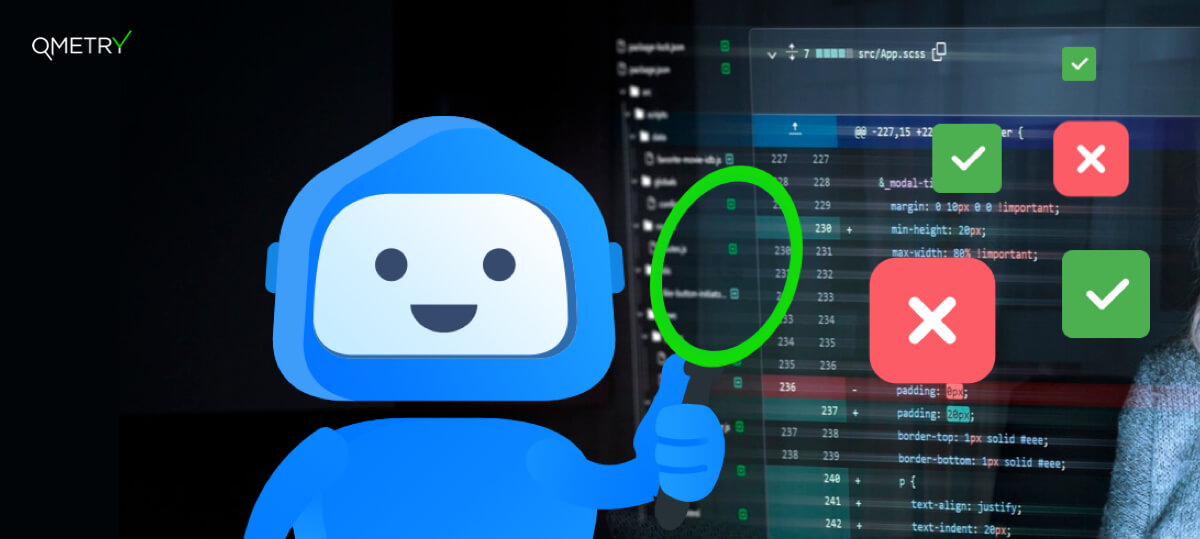AI-driven Software Testing & Bug Prediction: Revolutionizing the Future of Software Quality
Uncategorized

In today’s fast-evolving digital landscape, software quality is of paramount importance. As software systems grow more complex, ensuring their performance, security, and stability becomes an increasingly challenging task. Traditional manual testing processes, though effective to some extent, are often time-consuming, error-prone, and unable to meet the speed required by modern development cycles.
Enter AI-driven software testing and bug prediction, which are transforming the way software quality is ensured. These advanced techniques leverage machine learning algorithms and artificial intelligence (AI) to identify potential bugs, automate testing, and predict issues before they arise. This not only increases efficiency but also significantly improves the reliability and performance of software systems.
For students pursuing a BBA(Hons.) degree from the Best BBA(Hons.) college in Haryana, understanding the integration of AI in software development processes is crucial. As technology continues to shape the future of business, gaining insight into these emerging trends can provide a competitive edge in managing tech-driven projects and making informed decisions in the business world.
What is AI-driven Software Testing?
AI-driven software testing uses artificial intelligence (AI) and machine learning (ML) algorithms to enhance the traditional testing process. Instead of relying solely on manual testers or pre-set scripts, AI can analyze large volumes of data, detect patterns, adapt to new scenarios, and automatically test applications by simulating real-world user behavior. This approach significantly improves test accuracy, efficiency, and scalability.
One of the major benefits of AI-driven testing is its ability to identify defects early in the development cycle through predictive analytics. AI can analyze historical bug reports, detect recurring issues, and suggest areas of an application that are most likely to fail. This proactive approach helps reduce costs and development time while improving software reliability.
AI-powered testing tools can also enhance test automation by generating test cases dynamically, optimizing test coverage, and reducing redundant test scripts. Unlike traditional automation testing, which requires continuous human intervention for maintenance, AI-driven testing can self-heal test scripts when UI changes occur, reducing downtime and manual effort.
Furthermore, AI enables continuous testing in DevOps and Agile environments by integrating seamlessly with CI/CD pipelines. It accelerates release cycles, ensures higher software quality, and enhances user experience by identifying performance bottlenecks. AI-driven testing can also analyze real-time user feedback, improving application responsiveness. With the growing complexity of modern applications, AI-driven software testing is becoming a crucial innovation in software development and quality assurance.
Key features of AI-driven software testing include:
- Automated Test Generation: AI algorithms can generate test cases based on an understanding of the software’s code and its behavior. These automated test cases can simulate various scenarios, saving time and effort that would otherwise be spent manually writing them.
- Intelligent Test Execution: AI can automatically execute tests, observe the software’s response, and determine if it behaves as expected. This intelligent execution helps identify issues more quickly and efficiently than traditional methods.
- Regression Testing: AI tools can automatically run regression tests, ensuring that new changes or updates to the software do not break existing features. These tools learn which areas of the software are most affected by changes and prioritize tests accordingly.
- Real-time Feedback and Bug Detection: AI can provide real-time feedback on software performance, identifying bugs or vulnerabilities as soon as they occur. This early detection allows developers to address issues before they become more significant problems.
- Continuous Testing: With continuous integration and continuous delivery (CI/CD) pipelines becoming standard in software development, AI-driven testing ensures that testing is performed continuously, enabling rapid releases while maintaining high-quality standards.
How AI Improves Bug Prediction in Software
AI-powered bug prediction involves using machine learning models to analyze historical data, code patterns, and testing outcomes to predict where bugs are likely to occur in the future. These predictions allow developers to proactively focus on problem areas, saving valuable time and resources.
Key benefits of AI in bug prediction include:
- Predictive Analytics: By analyzing past bugs, AI systems can identify trends and patterns that indicate where bugs are most likely to arise in future code. These predictions help development teams target high-risk areas and reduce the likelihood of critical issues slipping through.
- Code Analysis and Anomaly Detection: AI can automatically analyze the codebase for potential vulnerabilities or inconsistencies. Machine learning algorithms can detect unusual code patterns or anomalies that might indicate bugs, enabling earlier intervention.
- Optimizing Testing Efforts: Bug prediction helps optimize testing efforts by prioritizing areas of the software that are most prone to defects. This reduces the amount of time spent testing stable components of the code, allowing developers to focus on more critical areas.
- Reducing the Cost of Debugging: By predicting bugs before they occur, AI helps minimize the need for extensive debugging later in the development cycle. Catching issues early means developers spend less time fixing bugs in production and more time adding new features or improvements.
- Improved Software Reliability: AI-driven bug prediction increases the reliability of software by proactively identifying potential issues. By reducing the occurrence of critical bugs, AI tools help ensure that the final product meets high standards for performance and security.
AI in the Software Development Life Cycle
AI-driven software testing and bug prediction are integrated throughout the software development life cycle (SDLC) to improve efficiency, accuracy, and speed. These technologies are particularly beneficial in Agile and DevOps environments, where rapid iterations and continuous integration require constant testing and bug detection.
- During the Planning Phase: AI tools can analyze previous project data to predict potential risks, bug hotspots, and areas requiring special attention. This helps teams plan and allocate resources effectively.
- In the Development Phase: AI-driven tools can identify coding patterns that are likely to lead to defects. By providing real-time feedback to developers, AI reduces the chances of bugs being introduced into the codebase.
- During Testing: AI automates and accelerates the testing process by generating test cases, running automated tests, and providing immediate feedback on issues. This continuous feedback loop ensures that software is tested thoroughly and consistently.
- In the Maintenance Phase: AI-driven testing tools can be used to monitor the software post-release, detecting any issues that may arise after the product has been deployed to users. These tools can also predict where future maintenance efforts will be needed, improving long-term software reliability.
Benefits of AI-Driven Software Testing & Bug Prediction
- Increased Speed and Efficiency: Traditional testing methods are often slow and require significant manual intervention. AI-driven testing tools can execute tests faster and more efficiently, significantly reducing the time required to identify and resolve bugs.
- Enhanced Accuracy: AI-driven testing minimizes human error by relying on automated processes. Machine learning algorithms continually improve over time, learning from past mistakes and increasing the accuracy of bug detection.
- Cost Savings: By detecting bugs early in the development cycle, AI-driven tools can save businesses significant amounts of money. Fewer defects in production means lower costs for debugging and fewer customer complaints, reducing the overall cost of software development.
- Improved Software Quality: By catching bugs early and continuously testing the software, AI-driven tools help improve the overall quality of the software. This results in more stable, secure, and reliable products, which is essential for maintaining customer satisfaction.
- Scalability: AI-driven testing tools can scale to handle large, complex applications. As software systems grow, these tools can easily manage more tests, more data, and more iterations, ensuring that quality remains high regardless of the size of the project.
Why BBA(Hons.) Students Should Care About AI in Software Testing
For students pursuing a BBA(Hons.) degree from the Best BBA(Hons.) college in Haryana, understanding AI-driven software testing and bug prediction is crucial in today’s technology-driven business environment. As businesses increasingly rely on digital products and services, knowing how AI can improve software quality can enhance decision-making skills.
- Informed Business Decisions: Business leaders who understand AI-powered testing can make better decisions about the development processes, resource allocation, and technology investments within their organizations.
- Competitive Advantage: Knowledge of AI and its impact on software development gives students an edge in the job market. As more businesses adopt AI technologies, professionals who are familiar with these advancements will be better equipped to lead and innovate.
- Tech-Driven Leadership: As a future leader in the business world, students who understand the integration of AI in software development will be better equipped to manage teams, oversee projects, and align technology strategies with business goals.
Conclusion
AI-driven software testing and bug prediction are transforming how businesses approach software development, providing faster, more efficient, and accurate methods for ensuring software quality. For students pursuing a BBA(Hons.) degree from the Best BBA(Hons.) college in Haryana, staying informed about the latest advancements in AI and its role in software development will be crucial in driving business success in the digital age.
By incorporating AI into the software development lifecycle, businesses can improve product quality, reduce costs, and gain a competitive edge in an increasingly tech-driven world. Understanding these emerging technologies not only helps students in their studies but also prepares them for leadership roles in the future of business and technology.
